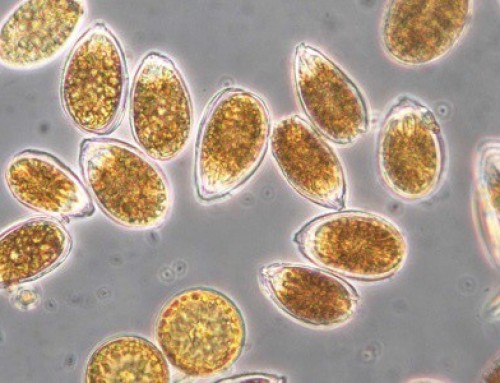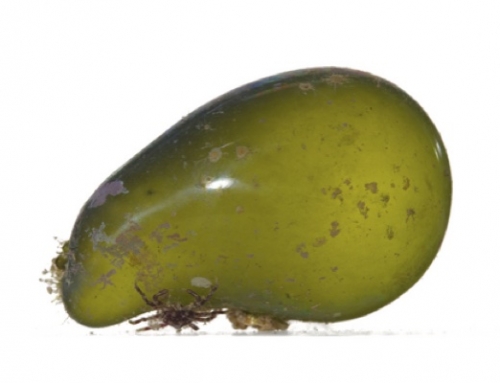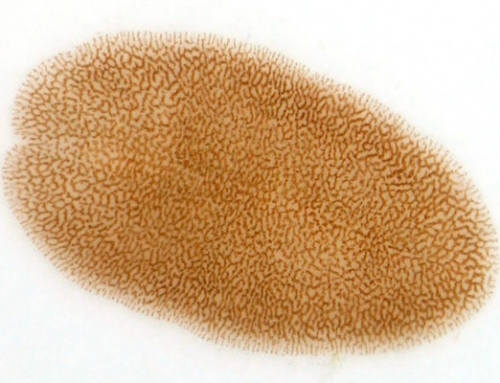Ubicua como ninguna
Un alga bonita y de aspecto delicado, que recuerda a las plumas de las aves. Pero con un crecimiento y capacidad de expansión increíblemente rápidos, la bryopsis constituye una de las principales amenazas para el acuario marino.
Con una sobresaliente capacidad reproductiva, la bryopsis es capaz de multiplicarse rápidamente de forma sexual (mediante la unión de gametos masculinos y femeninos) y asexual (liberando esporas o por el simple fraccionamiento de una parte de si misma). Es un alga tan resistente y su forma de reproducción asexual tan exitosa que no es de extrañar la aparición de fragmentos viables en las heces de algunos animales herbívoros. Esto la convierte en un alga muy ubicua, en pocos días puede extenderse por todos los rincones del acuario, incluso en las zonas menos iluminadas y alejadas del foco inicial.
La otra razón que hace de la bryopsis una alga extremadamente difícil de eliminar es la asombrosa capacidad para sobrevivir con niveles ultra bajos de nutrientes. La bryopsis no necesita apenas nitratos ni fosfatos para sobrevivir, ralentizará su crecimiento al máximo y seguirá presente en el acuario mientras el resto de sus habitantes muere de hambre.

Pero por si esto fuera poco, resulta que son monoicas, es decir cada alga presenta ambos sexos. De este modo, si las condiciones son favorables, podrían (y de hecho lo hacen) entregarse en memorable orgía y extenderse por todo el acuario en cuestión de días sin que nada se pueda hacer.
Son muchos los acuarios que han acabado desmontados por culpa de un crecimiento descontrolado de bryopsis.
Poco apetecible e indigesta
Para empeorar un poco las cosas, la bryopsis parece no tener un depredador eficiente. Los pocos que la prueban parecen perder el interés tras el primer bocado, posiblemente debido a las toxinas que contiene.
Algunas babosas como la elysia crispata parecen mostrar cierto interés cuando no hay otro tipo de comida disponible, pero su corta longevidad y pequeño tamaño hace que no resulten da gran ayuda.
Siguiendo con los invertebrados, algunos aficionados han reportado un éxito relativo con erizos de la familia tripneustes. El más habitual, tripneustes gratilla, llega a comer pequeñas matas de bryopsis cuando pasa mucho hambre pero no consigue ejercer un verdadero control sobre esta plaga y acabará muriendo antes de llegar a limpiar el acuario. Otros aficionados afirman que el cangrejo porcelana, mithraculus sculptus se la come, pero tampoco hay constancia de que llegue a ejercer un verdadero control.
En lo relativo a los peces, algunos peces conejo como el siganus vulpinus y el siganus magnifica parecen ejercer cierta presión cuando no hay otro alimento disponible, si bien no llegan a erradicarla por completo impiden o frenan su expansión.

Aunque no es habitual, la bryopsis también está presente como plaga en algunos arrecifes de coral. Esto parece ser debido a la presión que el ser humano ejerce sobre algunos de los pocos animales capaces de controlar su expansión, la erosión y el aumento de nutrientes en zonas cercanas a nuestros asentamientos.
Este alga puede crecer en las proximidades de los corales, los cuales acaban muriendo por el continuo roce de las mismas contra sus tejidos.
Cómo acabar con la bryopsis en el acuario
Esta es sin duda la gran pregunta: cómo eliminar un organismo que a penas tiene depredadores, es capaz de sobrevivir sin a penas alimento y tiene una de las mejores estrategias reproductivas del reino vegetal.
Es posible.
Hace unos años, por mera casualidad, un aficionado descubrió que elevando los niveles de magnesio por encima de 1.600 mg/l la bryopsis empezaba a aclararse y finalmente morir al acercarse a 2.000 mg/l. El producto empleado fue Kent Tech-M. Curiosamente otros aficionados subieron los niveles de magnesio en sus acuarios, con distintos productos, incluso por encima de los 2.000 mg/l sin conseguir ningún resultado positivo. Finalmente se descubrió que el producto de la marca Kent incorpora un contaminante fortuito (se cree que puede ser litio) que actúa como alguicida eliminando esta indeseable plaga.
Existen ciertos alguicidas muy potentes que debilitan e incluso acaban matando grandes cantidades de bryopsis, tal es el caso de AlgaeFix de API, Excital de EasyLife o Algae-X de Fauna Marin. El problema al usar estos alguicidas es que suelen matar todas las algas del acuario, además de pequeños microorganismos y bacterias. Muchos aficionados han conseguido acabar con la bryopsis solo para comenzar una batalla probablemente peor: los dinoflagelados. Además, estos alguicidas no suelen ser completamente eficaces ya que a las pocas semanas de terminar el tratamiento la bryopsis regresará casi como por arte de magia.
Pero existe otro método.
Es mucho más lento, trabajoso y no siempre se puede poner en práctica, dependerá de la cantidad de roca y corales que tengamos, así como del nivel de afectación por bryopsis.
Consiste en debilitar al máximo a la bryopsis para después eliminarla mediante métodos físicos. A continuación explico los pasos que hay que seguir para acabar con esta indeseable alga:

[sociallocker]
- Reducir el nivel de nutrientes al máximo. La bryopsis pierde vigor y empieza a tornarse de color marrón claro. No hay una cifra concreta pero normalmente se consigue con concentraciones de nitratos por debajo de 0,5 mg/l
- Extraer las rocas afectadas y cepillarlas en un cubo fuera del acuario. Después del cepillado deberemos enjuagar varias veces las rocas con agua limpia de restos vegetales (por ejemplo la procedente de un cambio de agua). Es importante no liberar restos de bryopsis en el acuario por lo que las rocas deben regresar bien limpias.
- Apagar las luces durante al menos cuatro días. Esto limitará las posibilidades de que algún trozo o espora de bryopsis pueda agarrarse a una roca y prosperar.
- Conectar un germicida ultravioleta. Con un flujo lento matará todas las esporas de bryopsis que se hayan liberado.
- Introducir herbívoros que ayuden en el control de pequeños brotes de bryopsis. Alimentar muy ligeramente en las siguientes semanas para mantener los nutrientes muy bajos y forzar a los herbívoros a comer bryopsis.[/sociallocker]
- Repetir el proceso al cabo de dos semanas.
Normalmente es suficiente con dos o tres tratamientos como el descrito. La ventaja de este método es que no eliminaremos otros microorganismos beneficiosos y con ello el acuario sufrirá menos alteraciones.

Como con la mayoría de las plagas y pestes que amenazan nuestros acuarios, la mejor estrategia siempre será la prevención.
En este caso, elegir roca y corales de calidad y procedencia conocida, que se vean limpios y hayan pasado un periodo de cuarentena antes de introducirlos en nuestro acuario. Hay otras medidas de higiene complementarias que debemos considerar, como el dar un buen cepillado y posterior enjuague con una solución de peróxido de hidrógeno (H2O2) por poner un ejemplo.
Por último insistir en que si observamos la aparición de una pequeña mata de algas con forma de pluma, deberemos eliminarlas de inmediato (cepillando fuera del acuario para no extenderlo más). La bryopsis se extiende tan rápido que rara vez da segundas oportunidades.





Hola Monti,
Si aceptas peticiones para entradas futuras, acorde con esta entrada y la de las gotas de agua (la trilogía que estas haciendo), ¿qué te parecería una entrada sobre los equipos UV y su correcto uso?
Gracias.